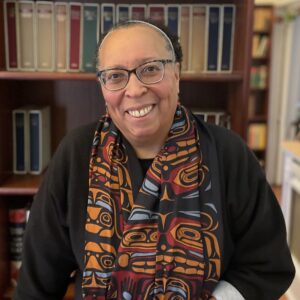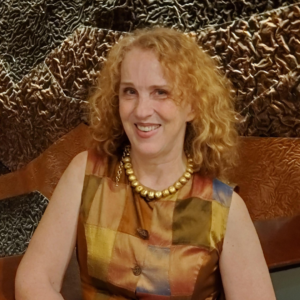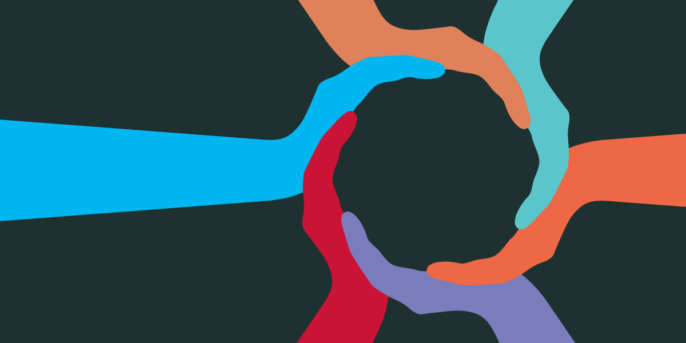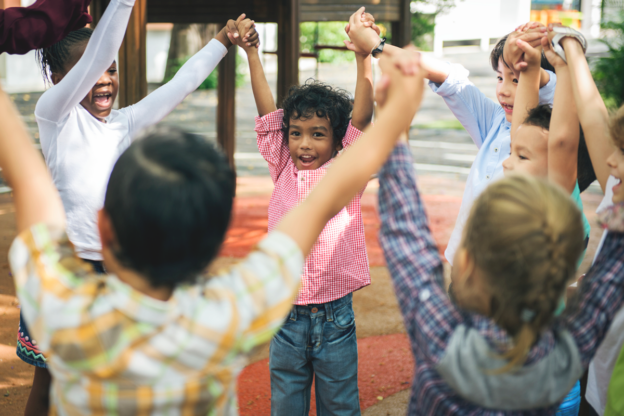As diehard youth development experts, we were over the moon when Education Reimagined commissioned us to pull together the preponderance of evidence from disparate sources within and beyond K–12 that make us confident that now is the time to create “a new education architecture.” Developing and sharing this paper, Too Essential to Fail: Why Our Big Bet on Public Education Needs a Bold National Response, has been a labor of love on our part.
We are deeply appreciative of the fact that Education Reimagined has always cast a wide net in their search for K–12 and nonprofit innovators who have found ways to embrace learner-centered education while fulfilling the basic functions of school—regular attendance, assessment, and accreditation. We are excited about their most recent commitment to accelerate the R&D necessary to enable the design of public education into community-based, learner-centered ecosystems. This work is focused on demonstrating that it’s possible to develop or adapt systems-level components to ecosystems that are “designed to embrace flexibility, connection to place, entrepreneurism, and holistic outcomes that meet the needs of learners.”
An Overview of the Evidence
In Too Essential to Fail, we devote an entire section to summarizing the convergent opinions of parents, youth, employers, and teachers calling for bold changes in public education:
- Shifting the purpose toward building competencies and learner agency.
- Shifting practices toward being more personalized, relevant, and contextualized.
- Shifting partnerships towards more purposeful, sustained relationships within and across school and community organizations and staff.
Many of these highly sought changes have been found by parents and learners outside of school in after-school programs, maker-space collaboratives, libraries and museums, summer camps, sports leagues, and summer employment programs, to name just a few settings designed to support voluntary, interest-driven learning. Parents and teachers agree that learning experiences outside of the traditional school and classroom contribute to learners’ success. Only 13% of teachers believe these enrichment experiences are “nice but not necessary.” The vast majority believe that they are instrumental. The reasons offered are sobering. Teachers, like parents, believe that these programs provide the kind of flexible, identity-affirming, interest-driven learning experiences teachers rarely have the freedom and time to provide during the school day. Unfortunately, access to these programs is not guaranteed. They are not available in every community and, when available, often require parents to pay fees and provide transportation.
The shifts highlighted aren’t just widely viewed as needed, they are deeply supported by research. Children are unique and resilient. Every child, even those who have experienced trauma, can thrive. Positive relationships and enriched experiences are the drivers of learning and development. Learning isn’t singular or linear. Academic, cognitive, social, and emotional competencies are valuable assets that are best built together. The timelines for their development are uneven, but rapid growth can occur in the right contexts. And growth continues to occur throughout the teen years into young adulthood.
In our paper, we review one of the most powerful demonstrations of developmental opportunities in Finding Out What Matters for Youth, a research study that identified the key components of young adult success and traced them back to the high school years. Successful young adults are productive (employed or completing post-secondary degrees), healthy (managing risks to their physical and emotional well-being), and connected (to family, community, civic, or faith organizations).
It was not surprising that the researchers found that young people who complete high school with good grades and plans—with good navigational skills and strong social networks—are four times more likely to be doing well as young adults than those who struggled in these areas. But it was validating to learn about the power of positive relationships, challenging learning experiences, and opportunities for meaningful contribution. Each of these supports provided during the high school years resulted in seniors who were four to five times more prepared for the next phase of their lives. These supports can be provided by schools, families, and community-based organizations.
It was empowering to learn that providing these supports to all high schoolers could almost double the percentage of young adults who are doing well—from 42 to 71%.
Levers for and Barriers to Change
There are bright spots across the country of conventional schools, alternative schools, charter schools, innovation school networks, and non-profit community organizations finding ways to help students earn credit for learning that matters to them, their families, and communities.
There are movements that have taken hold to redefine the parameters of student success and better coordinate learning supports across places and spaces. The Portrait of a Graduate movement has helped schools engage community members in naming real-world competencies. Community schools are a popular example of a school hub model designed to engage community partners in supporting the whole child during and after school. Community learning hubs are being established by mayors and county councils to coordinate learning supports in public systems and community organizations.
But there are also system blinders. Deeply ingrained ways of thinking about learning and operating schools that have thus far made it extremely difficult, if not impossible, to learn from these exceptions.
This is why we centered Thomas Arnett’s work in our paper. In K–12 Value Networks, Thomas succinctly summarized the common components in the organizational model of conventional schools that are commonly acknowledged as innovation constraints: standardized curricula and assessments, uniform block scheduling, large, closed campuses, promotion based on seat-time rather than mastery, compliance-focused classroom management. But schools, even those using very conventional teaching and learning approaches, have benefits that families value, starting with but not limited to the guaranteed commitment to provide staff trained to equip students with basic knowledge and skills in schools that offer safe, supportive, and reliable care during most of the workday.
It is these commitments that make our public education system too essential to fail. But it is the institutionalized commitment to standardization—standardized content, curricula, grades, class sizes, schedules, assessments, funding formulas, and teacher qualifications—that makes the system too entrenched to succeed, even when people in the system at every level are hungry for change.
We believe it is important for educators to acknowledge the constraints and benefits of the learning opportunities offered by other systems that have seeded innovation but do not have formal responsibility for school attendance and achievement.
These organizations are great places for interest-driven learning, relationship building, and passion and identity exploration because they do not have the responsibility of providing free, safe, weekly academic instruction for every child. Conventional schools, as well as traditional community learning and development organizations, are both parts of systems that need to be pushed to rethink their conventional operating model.
Learning ecosystems, like biological ones, don’t have fixed centers, but they can have multiple hubs and ecosystem stewards—people whose jobs are to monitor the moving pieces to optimize their connections and contributions.
Karen Pittman
A Potential Path Forward
The century-old hegemony schools have over the other organizations and systems in the learning landscape—combined with the fact that they are the only system with the funding and the mandate to define, deliver, and certify essential learning—has created a huge power imbalance. Schools are currently burdened with too much responsibility. Community youth development organizations have too little. Neither system is currently equipped or incentivized to address the imbalance that has been exacerbated by major changes in society that threaten our ability to thrive as a country.
The solution is not to just give parents the funding to completely assemble their children’s education outside of the boundaries of a unifying public education system. The solution is to re-envision, re-balance, and re-deploy leaders throughout the current formal education and community learning systems to take shared responsibility for ensuring that parents have options needed within a thriving learning and development ecosystem focused on supporting the development of healthy, competent, connected young leaders.
A learning and development ecosystem is more than the compilation of systems. It is a constellation of intertwined and entangled elements where learning happens through dynamic relational processes among the people, places, and possibilities found across, within, and between school and out-of-school places.
In the paper, we emphasize the fact that learning ecosystems already exist in every community, but they are very uneven and highly inequitable. In Some Assembly Required, Bellwether estimates that parents spend $200 billion a year assembling supplemental learning materials and experiences for their children. Affluent parents have seven times the spending power of low-income ones. There is simply no way to achieve the original purpose of public education—to instill learners with the skills and values needed to support our democracy—without broadening the system’s responsibility to update its practices and expand and elevate its partners.
Equity and inclusion concerns demand that we find a potential path forward that brings these two systems together in a way that gives learners free, reliable access to an ever-changing web of learning and development opportunities and supports. This vision was one of four future scenarios offered by the Organization for Economic Cooperation and Development (OECD) in their 2020 report, Back to the Future of Education. Only one, in our estimation, was a path towards greater equity: the idea of schools as learning hubs in which schools retain most functions (e.g. monitoring attendance, assessing progress, providing core academic instruction and support, arranging transportation) but competency recognition drives ecosystem development by fully leveraging resources and expertise from other institutions.
The main obstacle to activating this scenario is the Carnegie Unit—the idea that the most effective and equitable way to deliver key academic content is to divide it up to be delivered didactically in 120 hour-long time blocks commonly referred to as seat time.
In 2023, the Carnegie Foundation for the Advancement of Teaching—the organization that created the Carnegie Unit—announced its intent to build a “new currency of education… based upon meaningful skills and accomplishments demonstrated through assessment.” The foundation is establishing partnerships with organizations like the Educational Testing Service (the inventors of the SAT), the XQ Institute (creators of a major national campaign and fund to “rethink high school”), as well as with post-secondary institutions and education innovators.
This major public commitment may be the first time end-users—the learners, parents, businesses, and higher education institutions that work with tests and transcripts because they are universally accepted—can truly envision a path
forward together. A path that expands rather than eliminates the need for strong local public education systems that maintain the reliability and core functionality parents need while partnering to vastly increase the flexible pathways and opportunities learners need to grow and thrive.
Learning ecosystems, like biological ones, don’t have fixed centers, but they can have multiple hubs and ecosystem stewards—people whose jobs are to monitor the moving pieces to optimize their connections and contributions.
We can and should continue to work to improve coordination among the systems that support these places. But achieving the end goal of healthy, equitable learning ecosystems requires us to go beyond systems coordination. We must identify the operating components within each system that empower and engage their participation as stewards of the broader ecosystem and then consider how all can join together to create this new education architecture.





